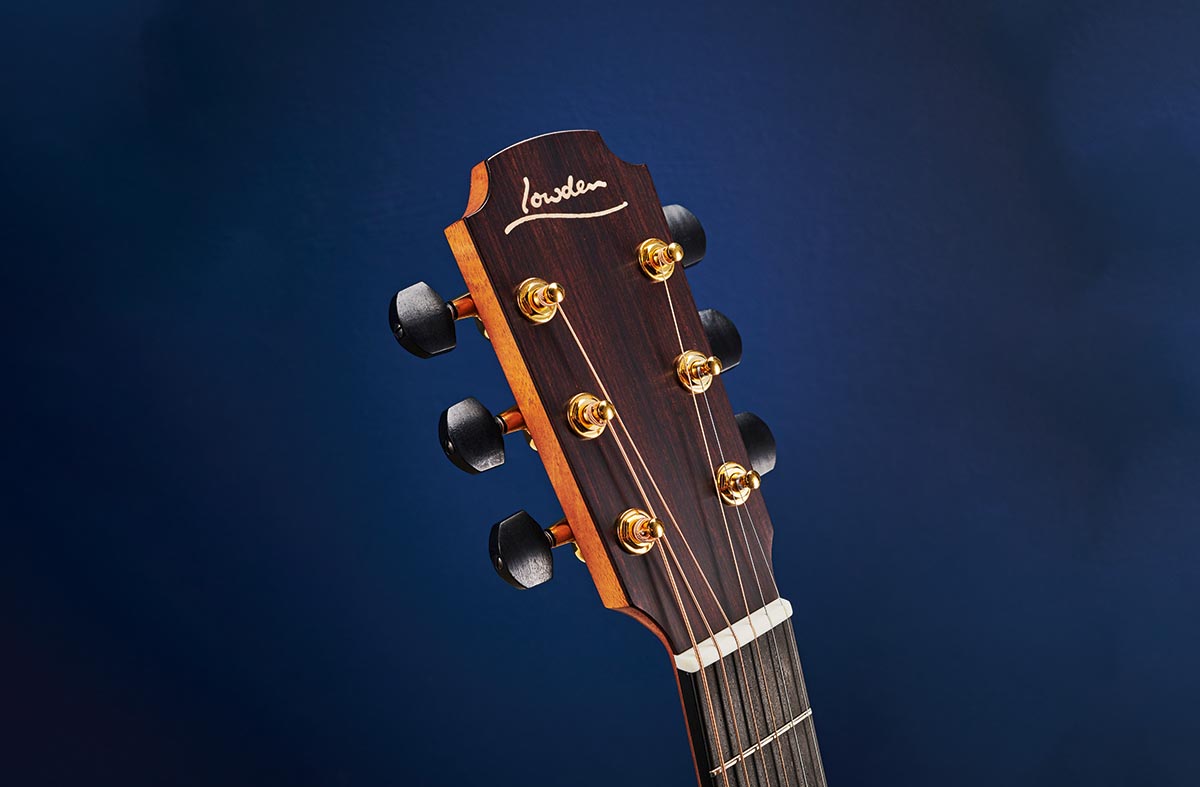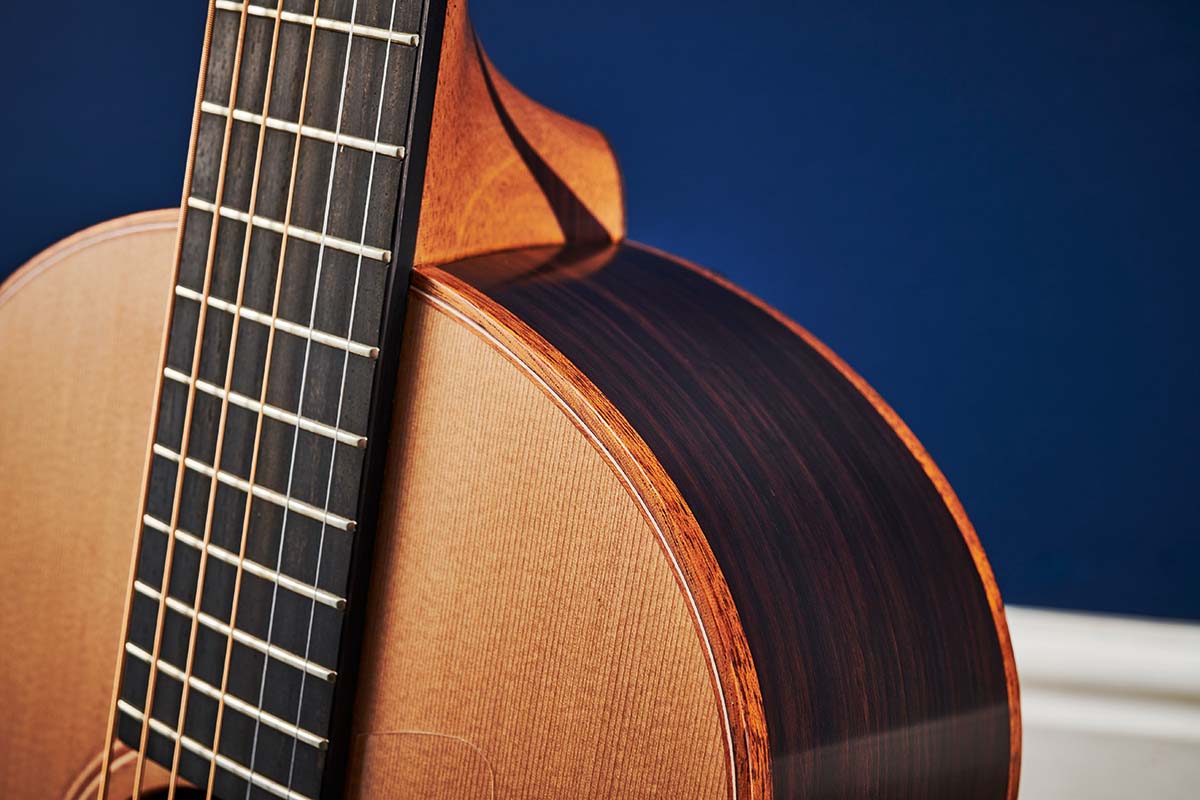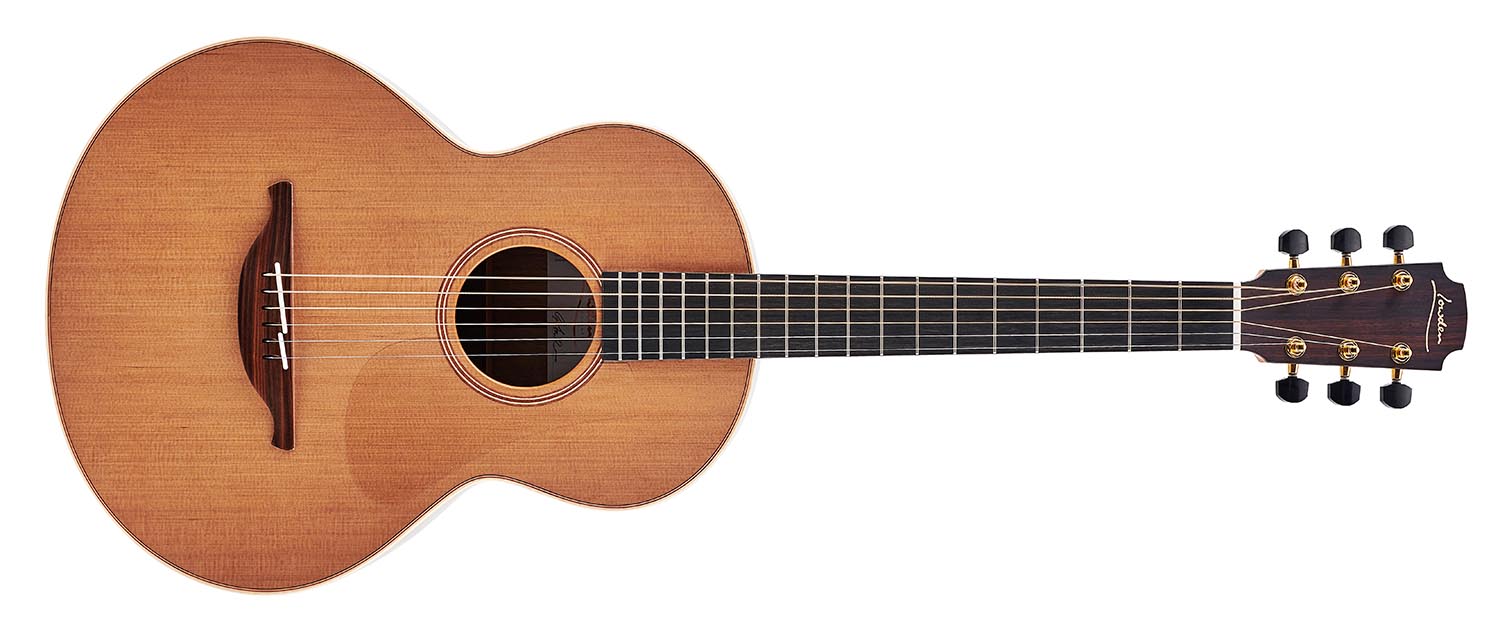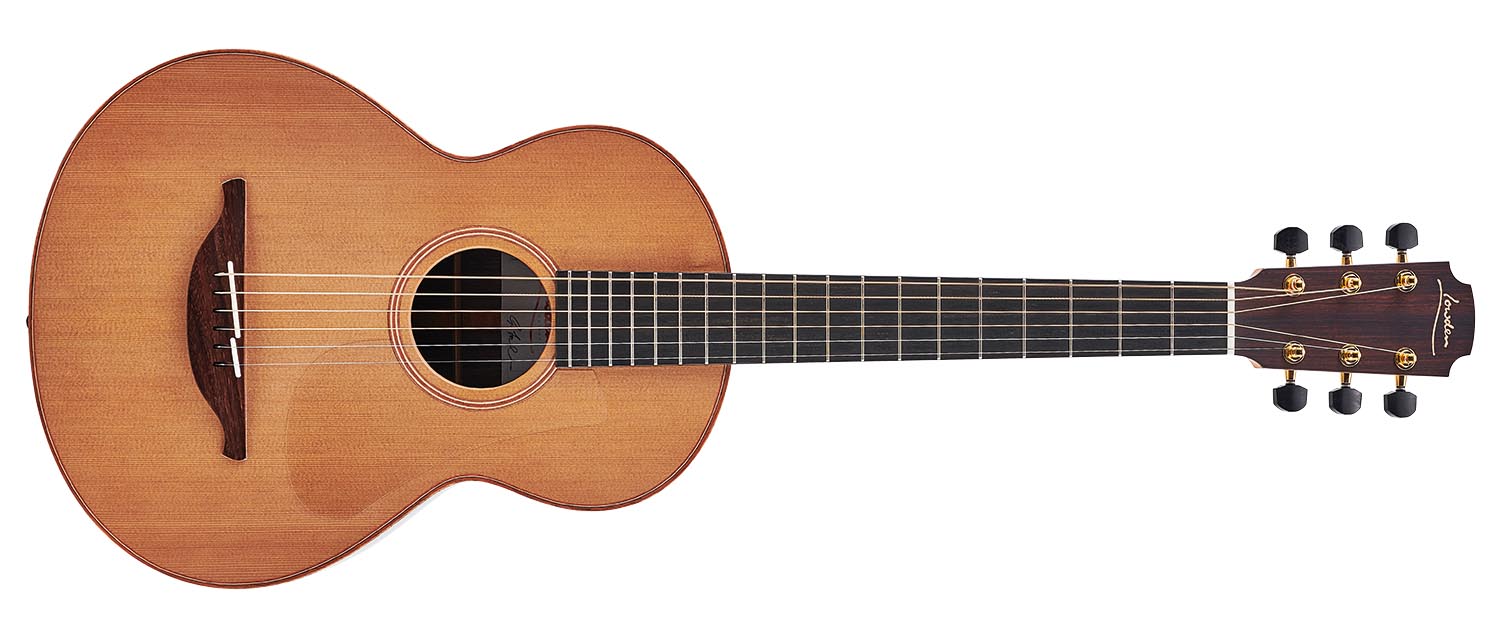Guitar World Verdict
Those looking to downsize from a boutique-build dread' will find a lot to like in these small-bodied and tonally exceptional acoustic guitars. The finish is typically flawless, and Lowden offer plenty of options for custom builds.
Pros
- +
The WL-25 is small-bodied, tonally satisfying.
- +
And it has bags of charm and sophistication.
- +
The S-23 has petite good looks.
- +
Plus an excellent airy voice and tone in spades.
Cons
- -
After more boom in your bass? Look further up the range from the WL-25.
You can trust Guitar World
You’re probably tired of us telling you that small is the new large as far as acoustic guitars are concerned. In recent months we’ve seen a few tiny tots pass through these pages and have been consistently in awe of how much sound it’s possible to get from a smaller frame.
And if you add a 12-frets-to-the-body configuration into the equation, things can become even more compact. Where’s it all going to end, we wonder?
These two models from Lowden are the latest to receive the 12-fret treatment, a WL – that is, ‘Wee Lowden’ – and an S model, the next range up from the Wee in terms of body size.
Whereas the difference between these models and the more regular 14-fretters is immediately apparent to the eye, things actually go a lot deeper than that when it comes to construction. It’s not just a case of moving everything along a bit so that the neck joins the body a little earlier. If only things were that simple.
When we spoke to George Lowden last year and drifted onto the subject of 12-fret guitar construction, he told us this: “When you join the neck at the 12th fret, it moves the bridge more or less into the centre of the bottom bout. Of course, acoustically, that’s a good thing.”
He went on to explain that on a 12-fret design the bridge sits at the widest part of the guitar’s soundboard so that the top is responding far more to vibration transmitted through the bridge from the strings.


But, talking about what has to change inside the guitar, he added, “there are a lot of changes that have to take place there. The bridge position has changed in relation to the soundbox so you have to change the bracing and then we have to experiment with the position of the braces, as well as the way they’re carved.
All the latest guitar news, interviews, lessons, reviews, deals and more, direct to your inbox!
“The first one of those that I designed about three years ago, I actually designed two different bracing systems for the same guitar and we made prototypes up using both systems and then made a judgement call on which we considered to be the best.
“That process is incredibly interesting to me, because when you play the new guitar – whether it be with a new wood or a new position for the bridge or new voicing or the bracing being changed – you will get a difference in tone and it’s often very subtle. For me, as a guitar maker, I’m not only relying on my own ears but I’m relying on the players’ ears as well and asking them for their viewpoints.”
We’re told that the bracing configuration that resides within our two review models here has been dubbed ‘Dolphin Bracing’, but you can see what we mean when we say that converting a 14-fretter to a 12 is a job that has to be thoroughly thought through.




Feel & Sounds
Looking at the WL-25 to begin with, we have to declare a soft spot for the Lowden Wee range. Size-wise, it has the appearance of a classical guitar but comes in a tad more slender when compared to our Admira Elena nylon-string. The WL measures 335mm at its widest point, whereas the Admira sits at 375mm at the same spot. It’s very cute-looking; let’s leave it at that.
Playing the WL-25 is a great experience and we found ourselves opting for quasi Renaissance fingerstyle before we even noticed
From a construction point of view, the WL has a cedar top with rosewood back and sides and mahogany bindings, but if this particular wood combo doesn’t float your boat, Lowden will accommodate practically anything you can imagine on demand.
The neck is mahogany with rosewood strips and the fingerboard is ebony, and, as we’ve seen so many times in the past when confronted with an instrument from Lowden, the workmanship is second to none.
The overall matt finish gives the guitar a sort of ‘worn in’ feel under the fingers and we found ourselves settling in with it from the offset. The body might be wee but the neck is fully grown with a satisfying full C profile, and its 45mm nut width acts as an open invitation for some deft fingerstyle activity.


It’s true to say that a diminutive body size matched with a fully realised neck means a little neck heaviness, but this is inevitable and almost completely unnoticeable after a very short period of playing. Standing up on a strap you wouldn’t even think about it.
How does it sound? Well, the trebles are loud and proud, with a level of volume and sustain that completely contradicts the size of the body.
Basses are understandably not quite as full and rich – you can’t argue with science, after all – but what’s there is packed with a surprising amount of tone. And, once again, single notes and chords ring on for days.
Playing the WL-25 is a great experience and we found ourselves opting for quasi Renaissance fingerstyle before we even noticed. Think of a very well behaved parlour guitar and you’re in the right aural space.

Moving over to the WL’s companion and the S-23 shares many of the WL’s construction details, save that its back and sides are walnut, which – legend has it – has a tonal fingerprint that sits between the dark complexity of rosewood and the bright zing of maple. Instruments featuring walnut have inspired us in the past in these pages and so it came as no surprise to find that the S-23 sings with a beautifully bright, airy voice.
Instruments featuring walnut have inspired us in the past in these pages and so it came as no surprise to find that the S-23 sings with a beautifully bright, airy voice
Sustain is practically infinite, too, with bass notes ringing on underneath our melodic noodlings, and drop tuning the bass string to D took us to a modal wonderland. Maybe it’s the combination of walnut with the red cedar working their magic together, or that extra few mill on the width of the soundbox, but this guitar has really hit the sweet spot in our vicinity. So much so, we didn’t want to put it down.
There are no pickups installed on either of our review models, but Lowden will happily fit one when you order your instrument. We can only imagine what both these littl’uns would sound like through a good acoustic amp or a PA. As we’ve been finding recently, body size is definitely not a determining factor once you enter the domain of amplification.
Verdict
You want us to name a champion, don’t you? Well, this sort of thing is very subjective and if we can allow ourselves the luxury of favouring one instrument over the other for just a moment then the S-23 would take the laurels.
But remember that it’s only because it holds the tonal key that unlocks our own specific desires in terms of what we want from an acoustic. Others may prefer the more parlour-like tonal range of the WL.
It’s horses for courses, and the advantage of being able to order exactly what you want from Lowden’s stable of body sizes and wood combos really hits the mark. Now that body size isn’t necessarily proportionate to volume and tonal output, the world really is your oyster in terms of what your particular needs are.
If you feel that a dreadnought has all the road handling capabilities of a monster truck and need something more manageable then there’s never been a better time to state your case with a custom order – and the team at Lowden should be one of the first places to direct your gaze.
Specs

- PRICE: £3,475 (inc case)
- ORIGIN: Northern Ireland
- TYPE: S-type acoustic
- TOP: Red cedar
- BACK/SIDES: Walnut with sycamore bindings
- MAX RIM DEPTH: 105mm
- MAX BODY WIDTH: 374mm
- NECK: Mahogany with rosewood splices
- SCALE LENGTH: 630mm (24.8”)
- TUNERS: Gotoh 381
- NUT/WIDTH: Bone/45mm
- FINGERBOARD: Ebony
- FRETS: 18
- BRIDGE/SPACING: Rosewood w/ bone saddles/55.6mm
- WEIGHT (kg/lb): 1.7/3.74
- OPTIONS: Various pickups/minor build variations are available when ordering. See website for details
- RANGE OPTIONS: The 12-fret S body size comes in a variety of body wood combos across the Lowden S range from the S-22 red cedar/mahogany (£3,365) and S-25 red cedar/Indian rosewood (£3,475) up to the S-35 Adirondack/Cocobolo (£5,975)
- LEFT-HANDERS: Yes
- FINISH: Matt Natural

- PRICE: £3,475 (inc case)
- ORIGIN: Northern Ireland
- TYPE: Small body ‘Wee Lowden’
- TOP: Red cedar
- BACK/SIDES: East Indian rosewood
- MAX RIM DEPTH: 100mm
- MAX BODY WIDTH: 335mm
- NECK: Mahogany with rosewood splices
- SCALE LENGTH: 610mm (24”)
- TUNERS: Gotoh 381
- NUT/WIDTH: Bone/45mm
- FINGERBOARD: Ebony
- FRETS: 18
- BRIDGE/SPACING: Rosewood w/ bone saddle/56mm
- WEIGHT (kg/lb): 1.6/3.5
- OPTIONS: Various pickups/minor build variations are available when ordering. See website for details
- RANGE OPTIONS: The 12-fret WL body size comes in a variety of body wood combos across the Lowden range from the WL-22 red cedar/mahogany (£3,365) and red cedar/walnut (£3,475) up to the WL-35 Adirondack/Cocobolo (£5,975)
- LEFT-HANDERS: Yes
- FINISH: Matte Natural
- CONTACT: Lowden Guitars
With over 30 years’ experience writing for guitar magazines, including at one time occupying the role of editor for Guitarist and Guitar Techniques, David is also the best-selling author of a number of guitar books for Sanctuary Publishing, Music Sales, Mel Bay and Hal Leonard. As a player he has performed with blues sax legend Dick Heckstall-Smith, played rock ’n’ roll in Marty Wilde’s band, duetted with Martin Taylor and taken part in charity gigs backing Gary Moore, Bernie Marsden and Robbie McIntosh, among others. An avid composer of acoustic guitar instrumentals, he has released two acclaimed albums, Nocturnal and Arboretum.


